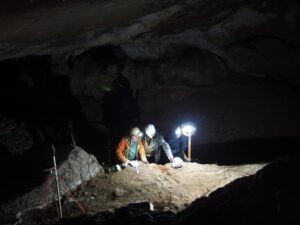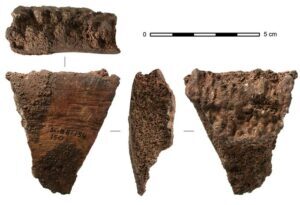
Universitat Autonoma de Barcelona—Humans were making tools from whale bones as far back as 20,000 years ago, according to a study conducted by scientists from the Institute of Environmental Science and Technology of the Universitat Autònoma de Barcelona (ICTA-UAB), the French National Centre for Scientific Research (CNRS), and the University of British Columbia. This discovery broadens our understanding of early human use of whale remains and offers valuable insight into the marine ecology of the time.
Whales, the largest animals on Earth, were an important source of food and materials such as oil and bone. For this reason, they are believed to have played a key role in the survival of many coastal human groups. However, tracing the origins of human-whale interactions is challenging, as coastal archaeological sites are especially fragile and vulnerable to rising sea levels, making it difficult to preserve evidence of early human-marine mammal relationships.
The research, led by Jean-Marc Pétillon (CNRS) along with ICTA-UAB scientist Krista McGrath and published in Nature Communications, analyzes 83 bone tools excavated from sites around the Bay of Biscay in Spain, along with 90 additional bones from Santa Catalina Cave, also located in the province of Biscay. The authors used mass spectrometry and radiocarbon dating to identify the species and age of the samples.
“Our study reveals that the bones came from at least five species of large whales, the oldest of which date to approximately 19,000–20,000 years ago. These represent some of the earliest known evidence of humans using whale remains as tools”, says Jean-Marc Pétillon, senior author of the research.
According to Krista McGrath, leading author of the paper, “ZooMS is a powerful technique for investigating past sea mammal diversity, particularly when diagnostic morphometric elements are missing from bone remains and objects, which is often the case for bone artifacts. We managed to identify species such as sperm whales, fin whales, blue whales, all still present in the Bay of Biscay today, as well as grey whales, a species now mostly restricted to the North Pacific and Arctic Oceans”.
In addition, chemical data extracted from the bones suggest that the feeding habits of these ancient whales differed slightly from those of their modern counterparts, pointing to potential changes in behavior or the marine environment. Overall, this discovery not only enhances our understanding of early human use of whale remains but also sheds light on the role whales played in past ecosystems.
_______________________________

Excavations in 2022 in the Basque cave of Isturitz, France, where several dozen whale bone objects were discovered. Picture: Jean-Marc Pétillon. Excavation director: Christian Normand
_______________________________

Large projectile point made of Gray Whale bone from the Duruthy rockshelter, Landes, France, dated between 18,000 and 17,500 years ago. Picture: Alexandre Lefebvre
_____________________________

Fragment of a Fin Whale vertebra from the Basque site of Santa Catalina, Spain, around 15,500 to 15,000 years ago. Excavation director: Eduardo Berganza. Picture: Jean-Marc Pétillon
_____________________________
Article Source: Universitat Autònoma de Barcelona news release
*Late Paleolithic whale bone tools reveal human and whale ecology in the Bay of Biscay, Nature Communications, 27-May-2025. 10.1038/s41467-025-59486-8




